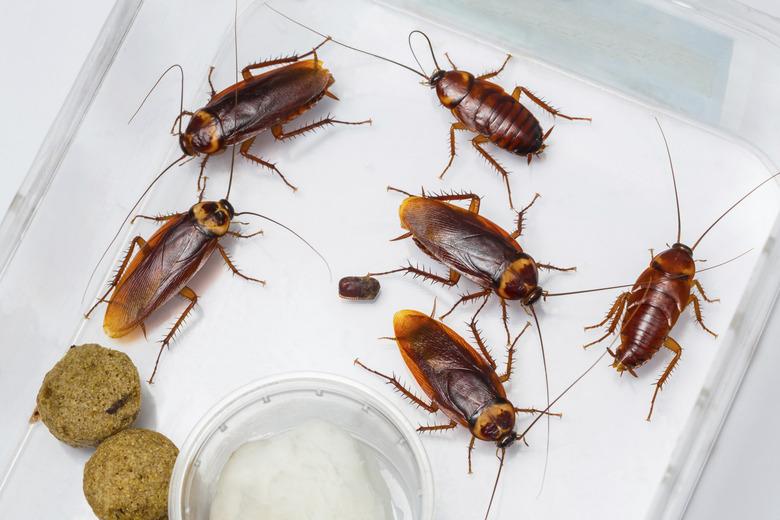What Are The Little Brown Bugs That Are Found On Kitchen Counters & Cupboards?
Homeowners may find a variety of small bugs in their kitchens. Small brown bugs, worms or moths in your kitchen cupboards and on counter tops are often the first sign of an insect infestation. It is important to properly identify pests, so you can take the appropriate steps to reduce infestations inside your home.
Types
Sawtoothed grain beetles are common household pests and often stay near spilled flour or sugar or in your cereal boxes. These brown bugs are about 1/10 inch long, flat and elongated in shape. They are characterized by the six sawthoothed spikes on their sides. Granary weevils are another common kitchen pest. These are reddish-brown to black and have no wings. Granary weevils feed on grains and place their eggs inside kernels of wheat. Cockroaches are familiar pests you may find in kitchen cupboards and on counters. German cockroaches are smaller, about 1/2 inch long. These roaches are light golden brown and have two dark bands near the head.
Effects
Sawthoothed grain beetles often come into homes in grocery bags or packaged grains. You may also find these beetles in nuts, dried fruit and seeds. They lay their eggs inside packaged food where they hatch and feed on food products. Granary weevils feed on grain products and you usually find them in pantries and cupboards. You may see German cockroaches foraging for food and water on countertops, cabinets and around sinks. Cockroaches can cause people to have severe allergic reactions, asthma and bronchitis.
Cultural Control
Start controlling insect infestations by keeping all food storage areas clean. Purchase food in a manner that allows you to use it quickly, and discard all insect-infested food products. Seal gaps around plumbing, place screens on your windows and inspect grocery items for signs of insect infestation before placing them in your home. Empty indoor trash containers frequently, avoid leaving pet food out overnight and keep your sink free from dirty dishes and food. Vacuum regularly in areas with insect infestations, especially areas where food particles are often found, such as underneath the kitchen table. Cockroaches are drawn to water, so eliminating their source of water will reduce their population. Empty your pet's water dish at night, tighten all loose plumbing and avoid over-watering your indoor plants.
Chemical Control
Spray sawtoothed grain beetles and granary weevils with insecticides containing pyrethrins, resmethrin or sumithrin. Control cockroaches with baits or traps that capture the roach and cause it to die. Sticky traps work well when placed near doors, underneath kitchen and bathroom sinks and near the garbage can. Sprinkling boric acid in cracks and cupboards around your home can poison cockroaches and reduce their populations, although it is best to use this mildly toxic product only where it is inaccessible to children and pets.
